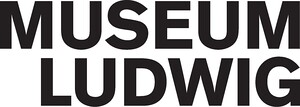ETA 1994–2018
2018 Wolfgang Hahn Prize
April 18–August 12, 2018
Heinrich-Böll-Platz
50667 Cologne
Germany
Hours: Tuesday–Sunday 10am–6pm
T +49 221 22126165
info@museum-ludwig.de
In 2018, the Gesellschaft für Moderne Kunst am Museum Ludwig will recognize Haegue Yang for her extraordinary body of work with the Wolfgang Hahn Prize. The Museum Ludwig will showcase the remarkable versatility of her entire oeuvre in the artist’s first-ever survey exhibition with over 120 works ranging from action-based objects from the 1990s to lacquer paintings, photographs, works on paper, video essays, anthropomorphic sculptures, performative pieces, and large-scale installations.
The abbreviation ETA stands for “estimated time of arrival,” among other things. Thus, the exhibition title points to an artistic career in transit and the constant itineracy of an artist who maintains studios in Seoul and Berlin and has exhibited internationally since 1994.
The exhibition will begin with Yang’s first venetian blind installation from her 2006 Series of Vulnerable Arrangements—the 2006 Version Utrecht, an immersive and sensorial experience unfolding from a composition of various materials and the simultaneous use of wind, scents, light, and heat. Within this arrangement, video essays document the artist’s travels through cities around the world and convey feelings of home, isolation, and dislocation associated with her itineracy in quite personal commentaries.
One of the first rooms will feature early and in some cases reconstructed works that reveal Yang’s examination of Western art history from Duchamp to Fluxus and tendencies of Institutional Critique as well as the then-current Context Art. As in her first few exhibitions in the 1990s, these works will be staged or ironically shown in display cases, like in an archive.
A central part of the exhibition is Storage Piece. This key work was created in 2004 out of financial need and an acute lack of space as a collection of packaged works on shipping pallets. The work has since been exhibited in several configurations, and its arrangement will also change at regular intervals in the Cologne exhibition—a reflection of Yang’s consideration of transitory states. Furthermore, it was an important contribution to Conceptual Art in the mid-2000s, as well as a striking commentary on a rapidly changing art market and the increasing commodification of art.
Yang’s well-known anthropomorphic light sculptures will be represented in the exhibition with the “Medicine Men” series from 2010, among other works. These consist of a variety of materials: functional and industrially manufactured everyday objects such as clothing racks, light bulbs, electric cables, and party wigs. Yang herself refers to these sculptures as “shamans” or “transvestites,” thus pointing to the ambiguous gender and social roles that medicine men take on in nature religions. They also pose questions of exoticism and cultural identity which run throughout Yang’s work.
Yang will also continue her series “VIP’s Union” (2001–) with a version for Cologne. Well-known local figures—VIPs from different areas of society such as culture, sports, business, and politics—will be invited to lend their favorite chair or table for the duration of the exhibition. This collection of different pieces of furniture will portray the local society and its domestic preferences.
The 12-meter-high DC Hall will feature two works consisting of blinds, Mountains of Encounter (2008) and Sol LeWitt Upside Down – K123456, Expanded 1078 Times, Doubled and Mirrored (2015). For the first time, two very different types of venetian blind installations will be juxtaposed in a single room: while Mountains of Encounter marked the beginning of a series of structurally complex compositions relating to historical events and personalities in Yang’s oeuvre, Sol LeWitt Upside Down – K123456, Expanded 1078 Times, Doubled and Mirrored is based on a cubic structure by the Minimalist artist Sol LeWitt, which Yang not only physically expands, but also conceptually condenses, doubles, mirrors, and finally turns upside down.
With her diverse oeuvre, Yang adeptly avoids clear attributions. Her works demonstrate elements of Institutional Critique and are conceptual as well as rich in cultural and historical references, while simultaneously sensually complex and emotionally charged. Across over 1500 square meters of exhibition space, this comprehensive retrospective’s spatial scenography will echo the conceptual dynamics of the works, lending the exhibition the quality of a Gesamtkunstwerk—harmonious yet full of dissonances.
Curator: Yilmaz Dziewior
Curatorial Project Management: Leonie Radine
Biography
Haegue Yang (*1971 in Seoul) lives and works in Berlin and Seoul. Since 2017, she has been teaching at the Städelschule, where she herself began her studies under Georg Herold in 1994. She was twice represented at the Venice Biennale in 2009 (in the programmatic exhibition fare mondi and in a solo exhibition in the Korean pavilion), and in 2012 she participated in dOCUMENTA (13).
Catalogue
A catalogue raisonné Haegue Yang: ETA 1994–2018 will be published alongside the opening of the exhibition with a text by Chus Martínez, a conversation between Haegue Yang and Yilmaz Dziewior, and a biographical essay by Leonie Radine.
The exhibition is generously supported by the Kunststiftung NRW, the Peter and Irene Ludwig Foundation, Michael Zimmer, and the cultural department of the Embassy of the Republic of Korea. We would like to thank the Peter and Irene Ludwig Foundation for their additional support for the program of music and films.
#MLxHY #museumludwig



